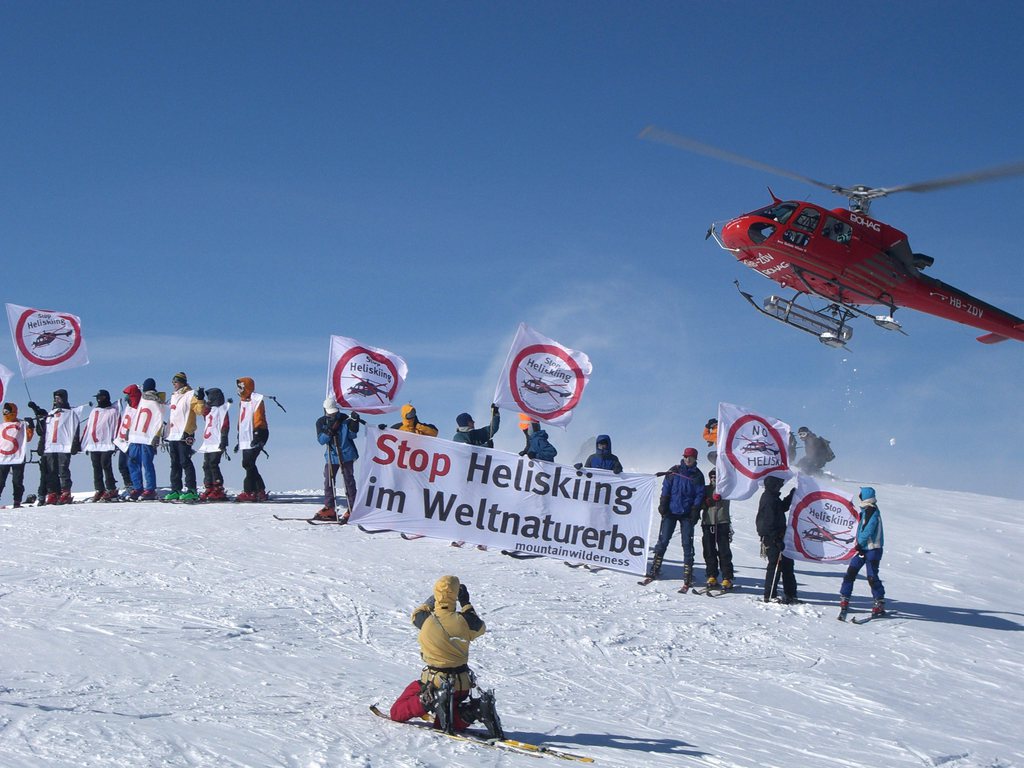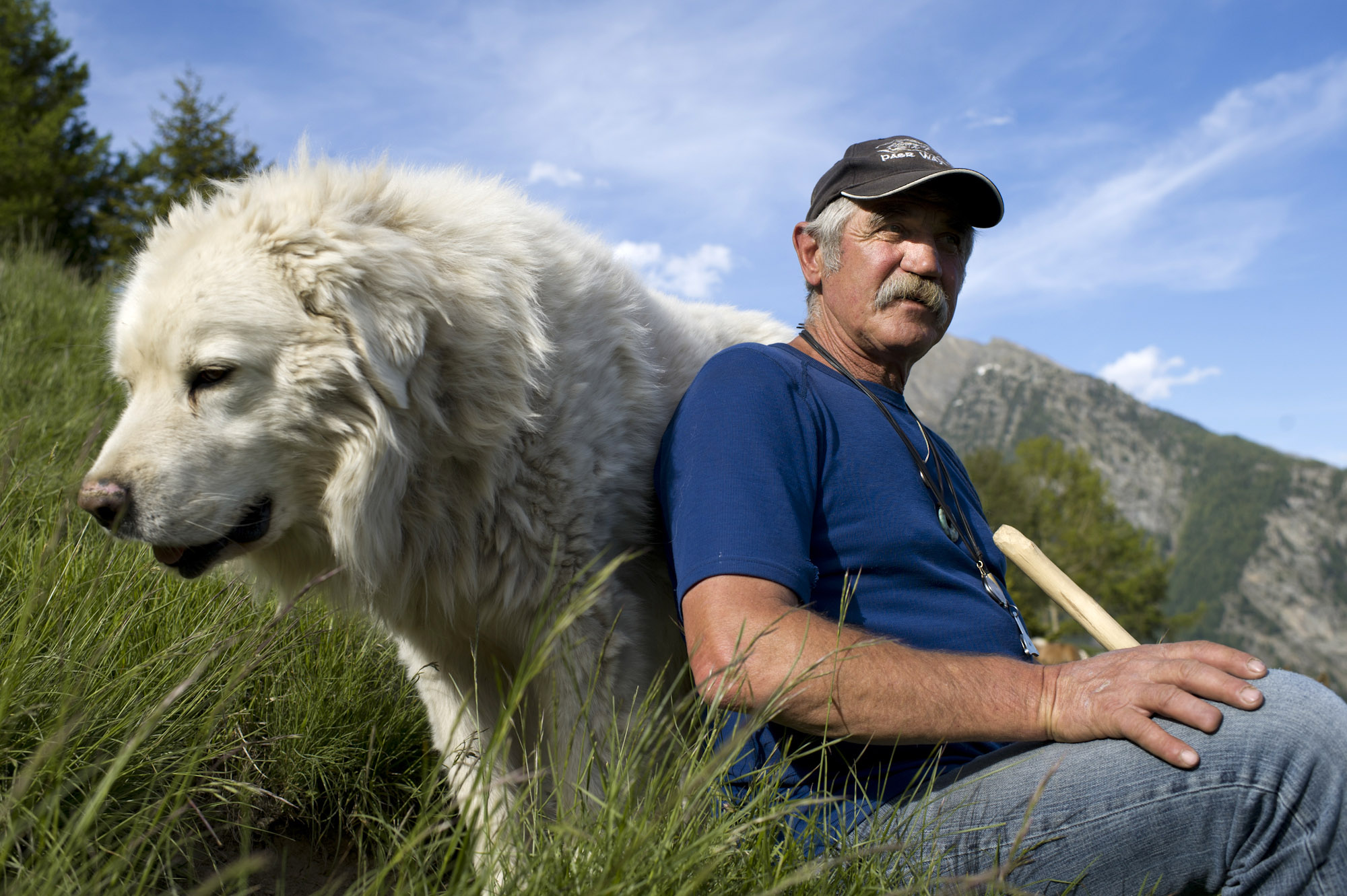Conflicting interests compete for space

New sports, the construction boom and large predators all need more and more space, putting pressure on nature zones and leading to clashes between humans and animals. Experts say though that guidelines and not bans are the solution.
The view from the Rüeggisberg monastery ruins is enough to take your breath away. The Eiger, Mönch and Jungfrau, the three most famous mountains in the Bernese Alps, can be seen in all their glory.
But the screeching engines of two fighter jets overhead breaks the spell in the Gantrisch regional nature park. Just south of the capital Bern, it was opened at the beginning of 2012.
People expect pristine nature, but the park’s director, Raphael Schmid, says it is not quite so.
“A regional nature park is first of all a sustainable encouragement programme for country areas like the one we are in,” he explains.
The aim is not to protect nature in clearly defined zones like the Swiss National Park in eastern canton Graubünden, but to maintain a culturally significant landscape that is the result of the interactions between man and nature.
“We have to look after this landscape, but also its cultural treasures,” says Schmid. “The Rüeggisberg ruins are one of the highlights of the Gantrisch park.”
For a park to earn official accreditation, the local communes had to back the project and must provide partial financial support. But the populations in areas where parks are planned are not necessarily welcoming the idea with open arms, as refusals for other projects in cantons Bern and Schwyz have shown.
No quad tours
Not everyone fully understands the aims of a park either. “There are people who have set up offers that don’t really correspond to our goals,” admits Schmid, who recently had to distance the park from operators proposing quad bike tours and helicopter flights.
Noisy and environmentally damaging hobbies, sports activities in the wilderness, landscapes overgrown with urban sprawl, intensive farming or the return of predators such as bears and wolves are a few of the challenges nature faces in Switzerland.
While construction has started to slow, it is still happening at a faster pace than population growth according to the Federal Statistics Office.
“There isn’t another country where there is so much competition for every square metre,” says biologist Hans Peter Pfister. He blames the increasing population and mobility for the heightened pressure on the countryside and animal habitats.
Pfister is known for his research on hares. He has been able to show that by splitting up their habitat, the number of animals decreases to one quarter of its original size. Populations of ground-nesting birds such as skylarks and whinchats also suffer.
In recent years, predators such as wolves, lynx and bears are making a comeback into zones they previously inhabited.
Regulatory role
“Large predators have a regulatory role,” explains Pfister. “The question is simple: do we still have enough room for these animals?”
These predators are competing with hunters for deer and chamois, as well as coming up against sheep owners.
“They get a lot of public funding, but they don’t do much to protect their herds,” says Pfister. “They expect indemnities when their animals are killed and demand that the predators be shot.”
For the biologist, who is also president of the Swiss Environment Education Foundation, the public must be better informed as most people have little contact with nature.
“If you take school-age children out into nature and let them make their own discoveries, they will have a totally different outlook when they are 40 or 50,” he adds. “It will be an advantage in the longer term to learn to live with nature and not fight it, as long as some of it is still left.”
Experts agree though that bans and restrictions are not the solution for sports enthusiasts. They suggest channeling activities.
Awareness campaign
For those taking part in organised activities, the easiest way to reach them is through their associations. The Swiss Alpine Club (SAC) has its own environmental protection service, handling conflicts related to the impact of climbing on nature for some time already.
Work carried out by the service includes making sure SAC publications such as guide books and ski touring maps only mention routes that disturb the least possible animals and flora.
With the Federal Environment Office, the SAC launched a national campaign to heighten awareness about wild animals in winter. An online map portal highlights animal protection zones and areas where hunting is banned as well as allowed routes.
According to Ursula Schüpbach, head of environmental protection at the SAC, the portal is used on average by 950 people daily during the winter. The campaign is also supported by 75 companies and associations active in outdoor and tourism activities, including the Gantrisch nature park.
Birds are back
It’s there that birds are making themselves heard again among the Rüeggisberg ruins. The park has put down a bet on so-called visitor guidance.
Snowshoe trails in winter and cycling paths in summer have signs indicating zones with sensitive wildlife. “It works surprisingly well,” says Schmid.
As the Gantrisch region is also home to wolves, there is also a potential for clashes between visitors and dogs guarding sheep herds.
“We are one of the first tourism regions to work with canton Bern’s sheep protection specialist,” points out Schmid. “We know at all times where the herds are so we can change proposed walking routes at any time.”
Land planning and use is a major political issue in Switzerland.
In March, Swiss voters accepted an initiative setting a 20% limit for holiday homes, a result that threatens to slow development in some mountain regions.
Parliament also approved revised land planning legislation in June as a counter-project to an initiative demanding tighter rules and brakes on fresh development. The initiative was withdrawn by its backers after the parliamentary decision.
However, it could be reactivated if a referendum is launched against the legislative changes.
Outside of urban areas, Switzerland’s forests are expanding. However considering this development as entirely positive is a mistake according to Hans Peter Pfister.
“Fundamentally, the increase of forest zones is a sign of agriculture’s negative development in mountain regions,” he told swissinfo.ch.
While it can be considered positive for the forest’s inhabitants, fauna and flora that need open landscapes are negatively affected.
(Translated from French by Scott Capper)

In compliance with the JTI standards
More: SWI swissinfo.ch certified by the Journalism Trust Initiative













You can find an overview of ongoing debates with our journalists here . Please join us!
If you want to start a conversation about a topic raised in this article or want to report factual errors, email us at english@swissinfo.ch.